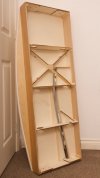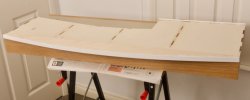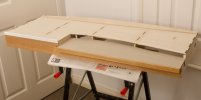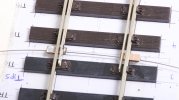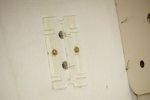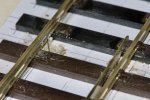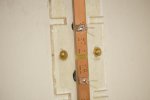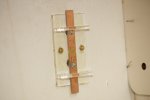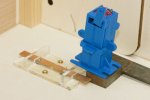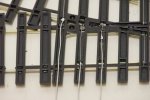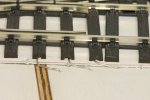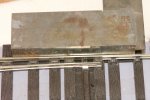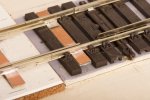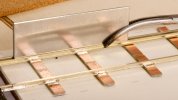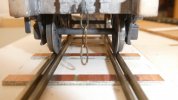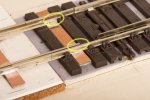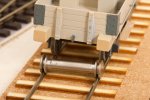Richard Gawler
Western Thunderer
With this in mind, and to match the pine edge mouldings have you used, have you considered using iron-on wood veneers for the fronts, outer ends, and rear of the baseboards to hide the ugly burnt (to me anyway) laser cut joints to finish the outer edges?

Truly I have never encountered a woodworking product which is so easy to use and which produces such a dramatic effect. The veneer is easier and quicker than paint, and about the same price if you have to buy fresh undercoat and gloss.
So far I have put veneers on only the outsides of the baseboard sides, and now I am reading up on balancing veneers. Which, like outside veneers, I have never used before.
I wonder, should I be adding some more veneer as patches between the cross members on the insides? Or perhaps put some stripwood along the unsupported bottom edges, or even simply prime the inside faces with dilute PVA? The internal structure is still as it was a few weeks ago, post 59.
It would be a shame if the sides start to warp after changes in humidity.
- -
Addendum 08:36: I have decided to try for extra veneers on the inside. I have no experience of this but many woodworking forums talk about the need for a backing veneer.
Last edited:


 ). It would have to be a Spring to get far enough out towards the Welsh side, but what about getting back, was a passing idle thought that crossed my mind as his lips moved. We chuckled once more, but he was serious; as were his cohort……. And this guy was an academic, the son of an Oxford Don. I suppose reason sometimes has to make way for extra intelligence. Strewth!
). It would have to be a Spring to get far enough out towards the Welsh side, but what about getting back, was a passing idle thought that crossed my mind as his lips moved. We chuckled once more, but he was serious; as were his cohort……. And this guy was an academic, the son of an Oxford Don. I suppose reason sometimes has to make way for extra intelligence. Strewth!

